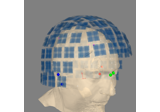mne.gui.coregistration#
- mne.gui.coregistration(*, tabbed=None, split=None, width=None, inst=None, subject=None, subjects_dir=None, guess_mri_subject=None, height=None, head_opacity=None, head_high_res=None, trans=None, scrollable=None, orient_to_surface=None, scale_by_distance=None, mark_inside=None, interaction=None, scale=None, advanced_rendering=None, head_inside=None, fullscreen=None, show=True, block=False, verbose=None)[source]#
Coregister an MRI with a subject’s head shape.
The GUI can be launched through the command line interface:
$ mne coreg
or using a python interpreter as shown in Source alignment and coordinate frames.
- Parameters:
- tabbedbool
Combine the data source panel and the coregistration panel into a single panel with tabs.
- splitbool
Split the main panels with a movable splitter (good for QT4 but unnecessary for wx backend).
- width
int|None Specify the width for window (in logical pixels). Default is None, which uses
MNE_COREG_WINDOW_WIDTHconfig value (which defaults to 800).- inst
None|str Path to an instance file containing the digitizer data. Compatible for Raw, Epochs, and Evoked files.
- subject
None|str Name of the mri subject.
- subjects_dirpath-like |
None The path to the directory containing the FreeSurfer subjects reconstructions. If
None, defaults to theSUBJECTS_DIRenvironment variable.- guess_mri_subjectbool
When selecting a new head shape file, guess the subject’s name based on the filename and change the MRI subject accordingly (default True).
- height
int|None Specify a height for window (in logical pixels). Default is None, which uses
MNE_COREG_WINDOW_WIDTHconfig value (which defaults to 400).- head_opacity
float|None The opacity of the head surface in the range [0., 1.]. Default is None, which uses
MNE_COREG_HEAD_OPACITYconfig value (which defaults to 1.).- head_high_resbool |
None Use a high resolution head surface. Default is None, which uses
MNE_COREG_HEAD_HIGH_RESconfig value (which defaults to True).- transpath-like |
None The transform file to use.
- scrollablebool
Make the coregistration panel vertically scrollable (default True).
- orient_to_surfacebool |
None If True (default), orient EEG electrode and head shape points to the head surface.
New in v0.16.
- scale_by_distancebool |
None If True (default), scale the digitization points by their distance from the scalp surface.
New in v0.16.
- mark_insidebool |
None If True (default), mark points inside the head surface in a different color.
New in v0.16.
- interaction‘trackball’ | ‘terrain’ |
None How interactions with the scene via an input device (e.g., mouse or trackpad) modify the camera position. If
'terrain', one axis is fixed, enabling “turntable-style” rotations. If'trackball', movement along all axes is possible, which provides more freedom of movement, but you may incidentally perform unintentional rotations along some axes. IfNone, the setting stored in the MNE-Python configuration file is used. Defaults to'terrain'.New in v0.16.
Changed in version 1.0: Default interaction mode if
Noneand no config setting found changed from'trackball'to'terrain'.- scale
float|None The scaling for the scene.
New in v0.16.
- advanced_renderingbool
Use advanced OpenGL rendering techniques (default True). For some renderers (such as MESA software) this can cause rendering bugs.
New in v0.18.
- head_insidebool
If True (default), add opaque inner scalp head surface to help occlude points behind the head.
New in v0.23.
- fullscreenbool
Whether to start in fullscreen (
True) or windowed mode (False). Default is None, which usesMNE_COREG_FULLSCREENconfig value (which defaults to False).New in v1.1.
- showbool
Show the GUI if True.
- blockbool
Whether to halt program execution until the figure is closed.
- verbosebool |
str|int|None Control verbosity of the logging output. If
None, use the default verbosity level. See the logging documentation andmne.verbose()for details. Should only be passed as a keyword argument.
- Returns:
- frameinstance of CoregistrationUI
The coregistration frame.
Notes
Many parameters (e.g.,
head_opacity) take None as a parameter, which means that the default will be read from the MNE-Python configuration file (which gets saved when exiting).Step by step instructions for the coregistrations are shown below:
